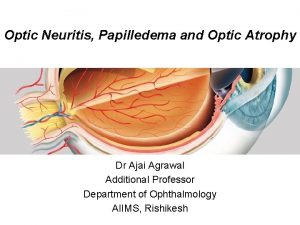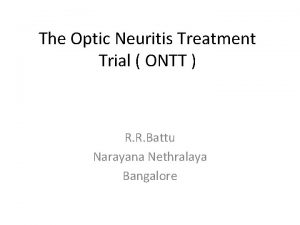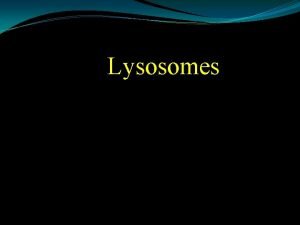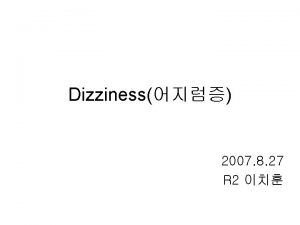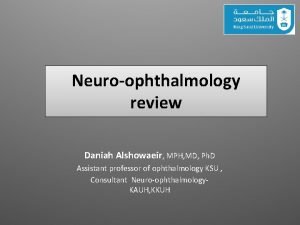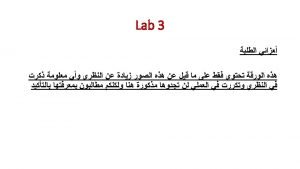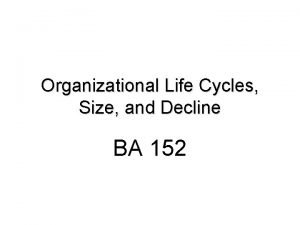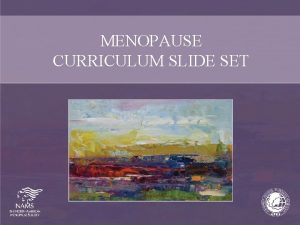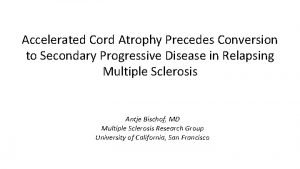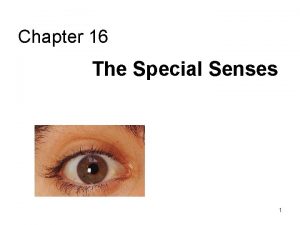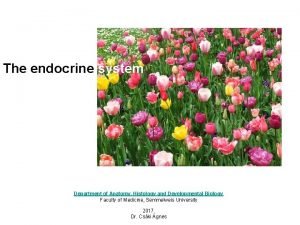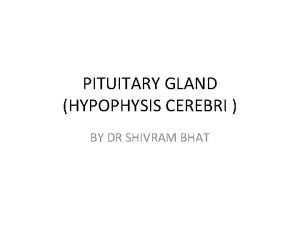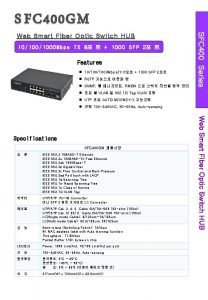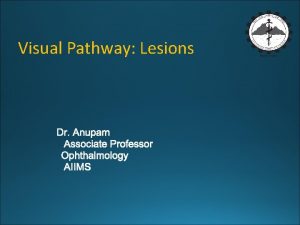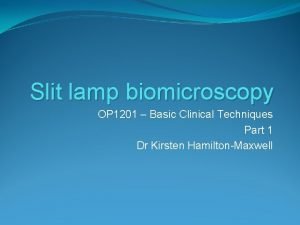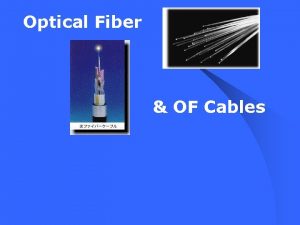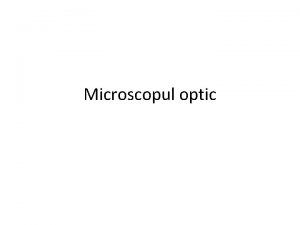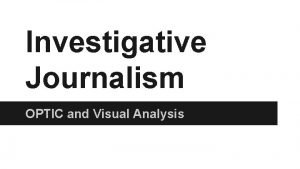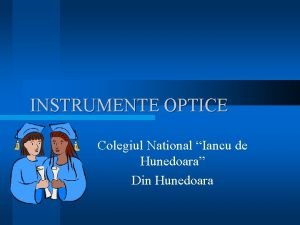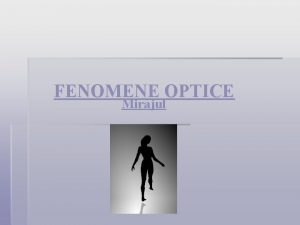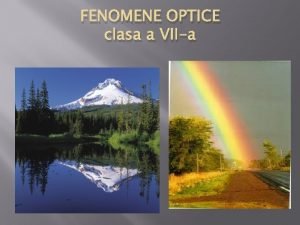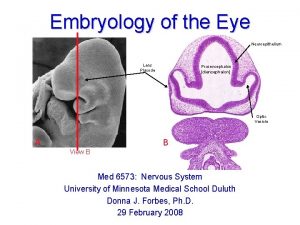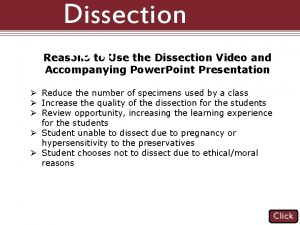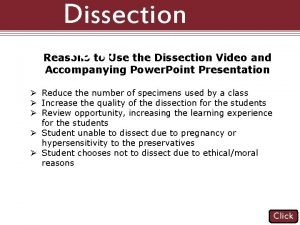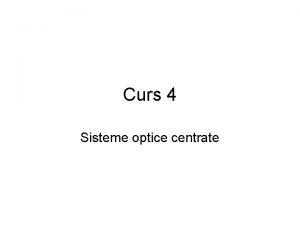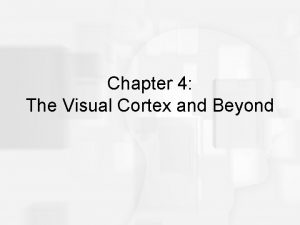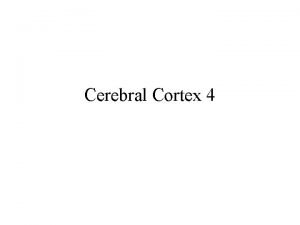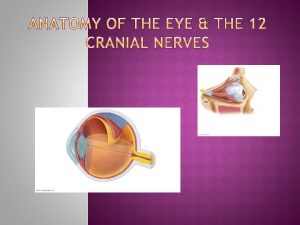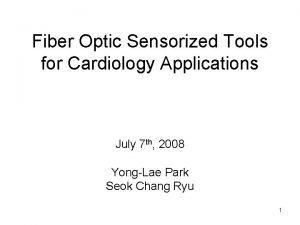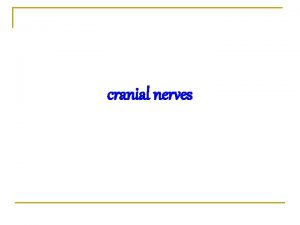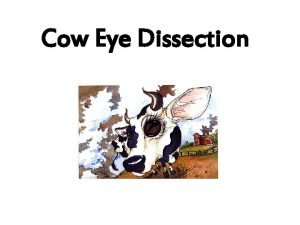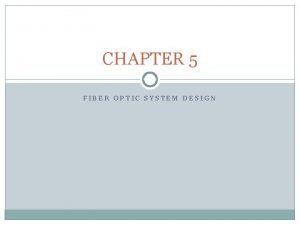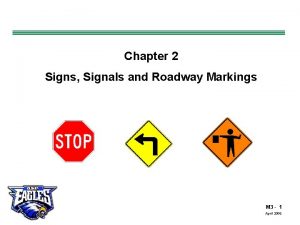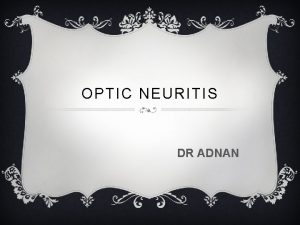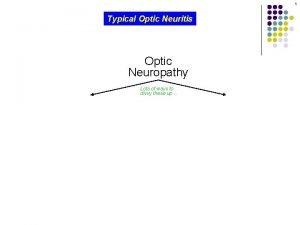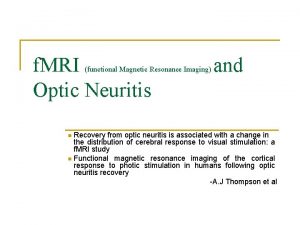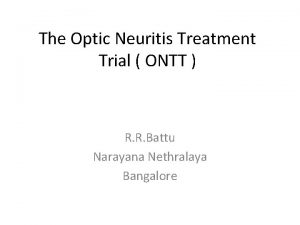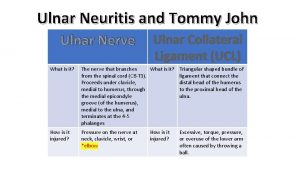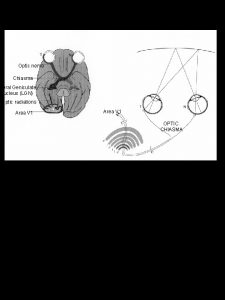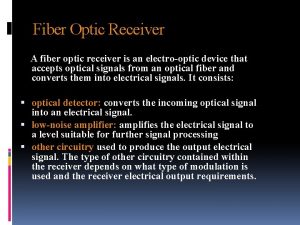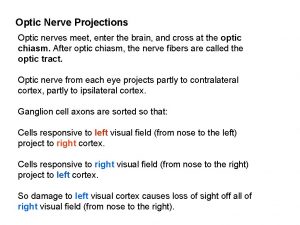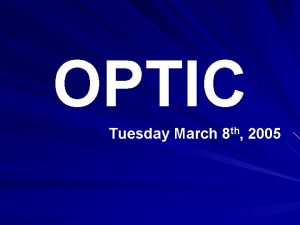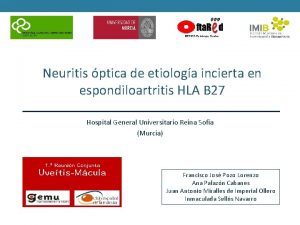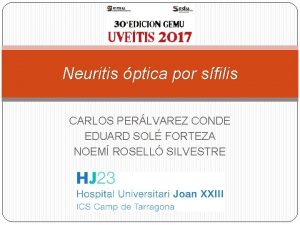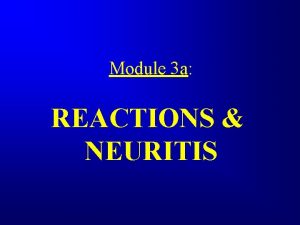Optic Neuritis Papilledema and Optic Atrophy Dr Ajai



















































- Slides: 51

Optic Neuritis, Papilledema and Optic Atrophy Dr Ajai Agrawal Additional Professor Department of Ophthalmology AIIMS, Rishikesh

Acknowledgement • • • Yanoff and Duker. Papilledema. 2016 In: Ophthalmology. Mosby Inc. Khurana AK. Optic atrophy 2014 In: Comprehensive Ophthalmology. CBS Publishers Weerasinghe, D. , & Lueck, C. J. (2016). Mimics and chameleons of optic neuritis. Practical neurology; 16(2): 96 -110. CME: Optic Neuritis: Diagnosis, Treatment, and Prognosis. https: //www. medscape. org/viewarticle/571660_2 Kahloun R et al. Infectious optic neuropathies: a clinical update. Eye and Brain 2015; 7: 59 -81 Creel D. Visually Evoked Potentials. 2012 Mar 1. In: Kolb H, Fernandez E, Nelson R, editors. Webvision: The Organization of the Retina and Visual System [Internet]. Salt Lake City (UT): University of Utah Health Sciences Center; 1995 -. Available from: https: //www. ncbi. nlm. nih. gov/books/NBK 107218/ Pastora-Salvador N et al. Foster Kennedy syndrome: papilledema in one eye with optic atrophy in the other eye. CMAJ 2011; 183(18): 2135 Reynolds SA. Pinpointing Papilledema. Optometric Management 2015: 82 -4 https: //www. optometricmanagement. com/issues/2015/september-2015/clinical-posterior Schiffmann J et al. Evaluation and treatment of papilledema in pregnancy. Comprehensive ophthalmology update 2006; 7(4): 187 -202 Toosy AT. Optic Neuritis. Lancet Neurol. 2014 Jan; 13(1): 83 -99 2

Learning Objectives • At the end of the class, students shall be able to • Define and classify optic neuritis. • Understand the aetiology and principles of management of optic neuritis. • Understand the stages and importance of papilloedema. • Differentiate between various types of optic atrophy. 3

Normal optic disc 4

Question • The disc in question is of a 60 year old myope who is instilling timolol eye drops since the past 5 years. • Is this a normal optic disc? 5

Optic Neuritis Definition: Inflammation of the optic nerve, impairing nerve conduction. Secondary to demyelination, infection or autoimmune pathology. 6

Classification A. Papillitis B. Retrobulbar neuritis – Acute – Chronic (toxic amblyopia) C. Neuroretinitis D. Perineuritis 7

Aetiology • Idiopathic • Demyelinating disorders • Multiple Sclerosis – Presenting feature in 25% patients – 70% cases occur in established disease – Recurs in same/ opposite eye in 25% patients – Uhthoff”s phenomenon: impairment of vision more with increased body temperature – Pulfrich phenomenon: altered perception of moving objects 8

Aetiology • Neuromyelitis optica (of Devic): acute, bilateral optic neuritis in young patient with paraplegia • Post-viral: mumps, measles, chicken pox, whooping cough • Metabolic/Nutritional deficiency: B 1, B 6, B 12, B 2, Folic acid deficiency Thyroid dysfunction, diabetes • Hereditary optic neuritis (Leber's disease) 9

Aetiology • Toxic amblyopia: Chloroquine, Ethambutol Tobacco, Ethyl alcohol, methyl alcohol Lead, Arsenic. • Ischaemic: Giant cell arteritis, Takayasu's disease, PAN, SLE • Granulomatous inflammation: Sarcoidosis, tuberculosis, syphilis 10

Symptoms • Idiopathic/demyelinating : 20 -40 years of age • Viral: children • Uniocular sudden/rapid diminution of vision • Visual loss, usually maximum by end of second week, improves by 1 -4 weeks • Discomfort/pain behind eyeball especially when moved superiorly 11

Signs • Visual Acuity: Usually 6/60 or less • Local tenderness • Pupillary reaction: Sluggish, ill-sustained or RAPD • Impaired coloured vision: hue, brightness • Impaired contrast sensitivity • Delayed dark adaptation • Visual Field: central, centrocaecal or paracentral scotoma, more pronounced for coloured fields 12

Ophthalmoscopic findings • Optic neuritis: MC in children, engorged, oedematous optic disc with obliteration of optic cup, small haemorrhages on disc • Retrobulbar neuritis: MC in adults • Neuroretinitis: Optic neuritis+ macular star 13

Differential diagnosis • Papilloedema • Pseudopapillitis High hypermetropia, Myelinated nerve fibres, Optic nerve head drusen (blurred margin, disc not significantly elevated, no vascular changes, stationary) 14

Investigations • MRI: demyelinating lesions, SOL • VEP: reduced amplitude and delayed transmission time (P 100 latency increased) Right optic neuritis 15

16

Advanced case of optic neuritis 17

Course and prognosis • Recovery takes 4 -6 weeks • 90% recover normal VA, but colour vision defects may persist • No correlation between initial visual loss and final visual outcome • 10% secondary or post-neuritic optic atrophy • Better outcome in young, unilateral cases 18

Treatment • Of cause e. g. anti-infective therapy • Intravenous methyl prednisolone 20 mg/kg/day(250 mg QID) for 3 consecutive days followed by oral prednisolone 1 -1. 5 mg/kg • Dexamethasone 200 mg OD pulse for 3 -5 days is a cheaper alternative • Supportive therapy 19

Papilloedema • Definition: Bilateral, non-inflammatory passive swelling of optic disc due to raised Intracranial pressure. • Does not develop if optic nerve is atrophic 20

Foster-Kennedy syndrome : contralateral papilloedema with ipsilateral pressure atrophy of optic nerve Due to - frontal lobe tumour, olfactory meningioma 21

D/D: Causes of 'disc oedema' • Papillitis, neuroretinitis • Anterior Ischemic Optic Neuropathy • Optic Nerve glioma, meningioma • Central Retinal Venous Occlusion 22

Aetio-Pathogenesis • Elevated Intracranial pressure due to any cause • Prelaminar Optic Nerve is affected by changes in tissue pressure, IOP and CSF pressure • Increased CSF pressure increases tissue pressure hampering axoplasmic flow • This further increases pressure on pre-laminar capillaries and small veins causing vasodilatation and tortuosity • Venous drainage compromise further increases congestion 23

General Symptoms • Headache, made worse by coughing or straining • Vomiting • Focal neurological deficit with/without changes in level of consciousness 24

Ocular symptoms • VA may be normal until late stages • Amaurosis fugax in some • In 25% patients, visual symptoms occur only in severe, advanced papilloedema 25

Signs • Pupillary reactions are normal until secondary atrophy sets in • Early: – Blurring of nasal>superior>inferior margins of disc – Disc hyperemia and dilated capillaries – Spontaneous venous pulsation absent – Splinter haemorrhages at/just off disc margin – Normal optic cup preserved 26

27

Established papilloedema • Margins indistinct and cup obliterated • Surface elevated upto more than +3 D with direct ophthalmoscope • Flame-shaped haemorrhages, cotton-wool spots • Venous engorgement and peripapillary oedema • Paton's Lines-radial lines cascading from optic disc • Macular star 28

With progression • Chronic papilloedema – Central cup remains obliterated – Haemorrhagic and exudative components resolve gradually – 'Champagne cork' appearance 29

• Atrophic papilloedema – Retinal vessels attenuated with perivascular sheathing – Dirty white colour due to reactive gliosis – Leads to secondary optic atrophy 30

Visual fields • Early-no changes • Established stage- enlarged blind spot • Chronic- peripheral constriction of field with nerve fibre bundle defects • Finally- total loss of visual field 31

Fundus photo, FFA , OCT 32

Papilloedema Optic neuritis History Headache, vomiting Rapid DV preceded by fever/respiratory infection Laterality usually bilateral usually unilateral VA normal till late stage severely reduced <6/60 Pain/tenderness of eyeball absent may be present Pupil reaction normal RAPD (Marcus-Gunn's pupil) Disc swelling >+3 D in established +2 D to +3 D Haemorrhage, exudates More, in established relatively less Visual fields Enlarged blind spot, later gradual constriction Central or centrocaecal scotoma Colour vision No effect Affected CT/MRI SOL Demyelinating disorder Recovery of vision May not be complete even after treatment Usually complete after adequate 33 treatment

Treatment • Treat Cause • Acetazolamide 250 mg 4 times a day • Surgical decompression of optic nerve to preserve vision 34

Optic Atrophy • Definition: Degeneration of optic nerve fibres with loss of their myelin sheaths characterised by pallor of the optic disc due to loss of vascularity owing to obliteration of disc capillaries 35

Classification-Aetiological Primary Optic Atrophy • No local disturbance, associated with CNS disease or no discoverable cause • Commonest cause – Multiple Sclerosis • Leber's optic atrophy • Nerve compression: Tumour, hydrocephalus • Injury to retrobulbar optic nerve 36

Cavernous type of Primary Optic Atrophy • Deep excavated cup with undermined edges – Glaucomatous optic atrophy 37

Aetiological classification • Secondary optic atrophy: preceded by swelling of optic disc- papilledema, optic neuritis, neuroretinitis • Consecutive optic atrophy: follows extensive disease of the retina - Retinitis pigmentosa Long-standing retinal detachment 38

Anatomical classification • Ascending: Lesion in retina, terminates at lateral geniculate body – • Eg: RP, CRAO • Descending: Disease involving optic nerve fibres anterior to LGB, terminates at optic disc – • Eg: chiasmal compression 39

Symptoms • Gradual/rapid loss of central/peripheral vision • Impairment of colour vision 40

Signs • Visual Acuity impaired in proportion to death of optic nerve fibres • RAPD in unilateral Optic Atrophy Ultimately pupil dilated and immobile 41

Primary OA ophthalmoscopy • Pale disc, classically paper white in colour • Margins sharply defined • Minimal atrophic cupping • Blood vessels attenuated with marked reduction of small blood vessels on ONH to <6 42

Secondary OA ophthalmoscopy • Pale disc with dirty-grey colour, blurred margins • Physiological cup is full, lamina cribrosa obscured • Narrowing of blood vessels with sheathing • Gliosis over disc surface extending towards peripapillary retina 43

Primary OA Secondary OA Appearance chalky white dirty grey Margins sharply defined blurred Cup deep obliterated Laminar dots visible not visible Glial proliferation absent marked Vessels no sheathing Previous disc oedema absent present 44

Consecutive optic atrophy • Yellowish-waxy pallor of the disc • Margins less sharply defined • Marked narrowing, even obliteration of retinal blood vessels 45

46

Investigations • Visual field: In partial OA, central vision is depressed with concentric contraction of the visual field • FFA of Optic nerve head • VEP especially in children • Neurological evaluation 47

Hereditary optic atrophy • Autosomal recessive/dominant • LHON: Leber's hereditary OA 48

Treatment • Treat the cause • Gene therapy is emerging • Community based rehabilitation in bilateral cases as prognosis is poor Low-vision aids 49

Question • The adjoining photograph belongs to a 12 year old boy who has difficulty in seeing at night. • Can you identify the disc abnormality in the photograph? • What condition does he suffer from? 50

Thank you 51
 Retrobulbar neuritis vs optic neuritis
Retrobulbar neuritis vs optic neuritis Marcus gunn sign
Marcus gunn sign Ontt trial
Ontt trial Hetrophagy
Hetrophagy Ajai nair
Ajai nair Seizure eyeball deviation direction
Seizure eyeball deviation direction Trophy suffix
Trophy suffix Papilledema adalah
Papilledema adalah Dr anand rao
Dr anand rao Adie's pupil
Adie's pupil Testicular atrophy
Testicular atrophy Wet gangrene
Wet gangrene Ba 152
Ba 152 Muscle
Muscle Vaginal atrophy
Vaginal atrophy Vaginal atrophy
Vaginal atrophy Atrophy
Atrophy Disadvantages of optical fiber
Disadvantages of optical fiber Retina and optic nerve
Retina and optic nerve Endocrine organ histology
Endocrine organ histology Pituitary and optic chiasm
Pituitary and optic chiasm Switch hub fiber optic
Switch hub fiber optic Homonynous
Homonynous Slit lamp technique
Slit lamp technique Interference figure uniaxial minerals
Interference figure uniaxial minerals Disadvantages of fiber optics
Disadvantages of fiber optics Optic strategy examples
Optic strategy examples Disadvantages of current transformer
Disadvantages of current transformer Microsens distributor
Microsens distributor Formarea imaginii in microscop
Formarea imaginii in microscop Luneta lui galilei
Luneta lui galilei Optic picture analysis
Optic picture analysis Ochiul instrument optic
Ochiul instrument optic Optic disc blind spot
Optic disc blind spot Fenomene optice exemple
Fenomene optice exemple Fenomenele optice
Fenomenele optice Development of prosencephalon
Development of prosencephalon Suspensory ligaments cow eye
Suspensory ligaments cow eye Vitreous body cow eye
Vitreous body cow eye Sistem optic centrat
Sistem optic centrat Hybrid fiber coaxial vs fiber optic
Hybrid fiber coaxial vs fiber optic Space qualified fiber optic cable
Space qualified fiber optic cable Cerebral optic merchandising
Cerebral optic merchandising Optic ataxia
Optic ataxia Southern cross cable network tonga
Southern cross cable network tonga Fiber optic cable rodent protection
Fiber optic cable rodent protection Superior oblique tendon
Superior oblique tendon Fiber optic force sensing catheter
Fiber optic force sensing catheter Optic nerve names
Optic nerve names Exploratorium cow eye
Exploratorium cow eye Fiber optic system design
Fiber optic system design Signs signals and roadway markings
Signs signals and roadway markings
